Lean into 2018 - Jumpstart the year with Pat Divilly's fitness plan
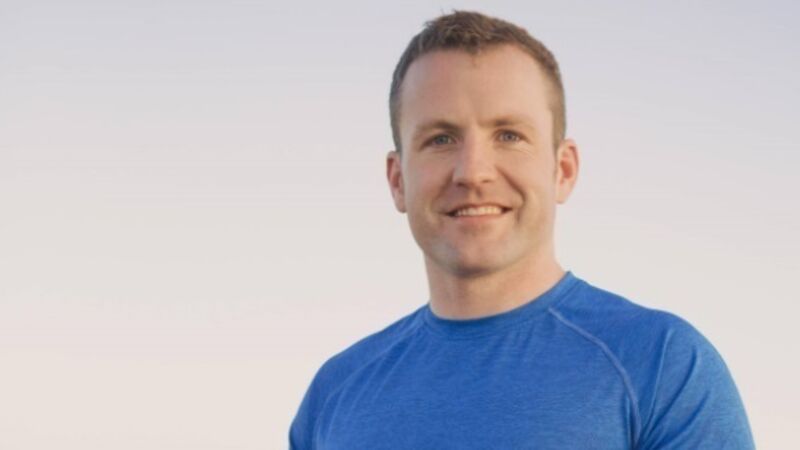
How many times have you started a new year health kick; committing to losing that stubborn kilo, undertaking a radical new diet plan, and promising you’ll drag yourself to the gym five times a week?
Inevitably you find yourself overwhelmed, and before you know it you’ve thrown in the towel and decided next year is the year you’ll make it happen. Sound familiar?
Well, maybe you need to rethink your approach. Every journey starts with a few small steps, and charting a course to better health is no exception.
If ‘new year, new you’ is a daunting proposition, wellness coach Pat Divilly believes looking at the smaller picture helps make any goal attainable.
Now aged 30, when Pat’s Dublin-based personal training business failed six years ago, he returned home to Galway and decided to get back to basics, training five clients on his local beach.
Since then, he’s written three books and helped 25,000 online clients reach their weight-loss goals; but as he says himself, “If I’d set out to achieve all that, I would have been intimidated, so I set small targets along the way.
"First get five clients, then get 10, and so on.”
Achieving success via a series of “mini wins” has now become a cornerstone principle of Pat’s weight-loss strategy, and whether it’s life goals or fitness goals, his philosophy is simple: “Think of your starting point as ‘A’, your goal as ‘Z’, and begin by asking yourself, ‘How do I get to B?’”
When it comes to improving your physical health, you might expect that first step to involve diet or exercise, but for Pat, the secret to success is all in the mind.
With a masters in nutrition science, he says, “without a shadow of a doubt nutrition is the key component in weight loss, but a combination of training and nutrition is optimal, and beyond that, you have to think holistically.
“These days, we’re bombarded with weight- loss plans,” he says.
“We don’t have an information problem, we have an application problem. Why don’t we do what the vast majority of us know we’re supposed to do?”
The answer is rooted in psychology, and using a combination of mindfulness and neurolinguistic programming techniques, Pat helps clients break the patterns that keep them stuck before they embark on a weight-loss journey.
Then, keeping it simple helps make new those new habits stick.
“We overcomplicate everything, especially health and nutrition,” he says.
“Embracing a simplified approach helps us form good habits and keep our goals in sight. If it helps get you on the right path pick one training goal and one nutritional change you’re going to make, and don’t make it more complicated than that.
“People slog through fitness programs they don’t enjoy, believing the misery will be worth it when they see the results,” he says.
“But by setting manageable goals and focusing on simplicity and consistency, I believe people can enjoy the journey as much as the destination.
“Mindfulness is the key. Practicing gratitude, cultivating confidence and tracking mini wins gives my clients the tools they need to attain and maintain a healthy, happy body and mind.”
Mindset played a crucial role in the success of Elaine Dunne, an online client of Pat’s who lost 9kg in 2017.

After years of yo-yo diets, characterised by “self-sabotaging” behaviours, the mother of three from Naas, Co Kildare, had “a light bulb moment” when she saw one of Pat’s videos on Facebook.
“I always struggled with my weight, even as a child,” Elaine recalls. “I started dieting at 19, and I’m now 35. Things would work for a while but I’d always regain the weight.”
Through working with Pat, Elaine learned she was trapped in a mindset of predicting failure.
“I knew I should eat right; I knew I should exercise, and I knew those actions would lead to results,” she says. “But any time I struggled or felt deprived, I’d tell myself: ‘I’m sad, I need chocolate.’ Or, ‘this is pointless, it never works.’
“Pat helped me see that if I changed the story I was telling myself, it would lead to different results. I was carrying the baggage of years of failures. Letting go of that was the first step I needed to take.”
Elaine completed three 20-minute sessions of high-intensity interval training per week and overhauled her diet to include more vegetables and good fats, and she echoes Pat’s advice to keep it simple.
“Just do your actions, acknowledge your mini wins and keep going rather than getting bogged down in striving for perfection.”
Mother to Caoimhe, six, Sadhbh, four, and baby Oisin, 18 months, she says, beyond her personal weight-loss goals, she “wanted to set a good example to my children; show them you don’t use food to regulate your emotions.
“On previous diets, self-sabotage was an issue for me. If I gained weight, or was sad, or happy — any emotion at all — I resorted to food.”
From the outset, Elaine knew Pat’s programme would be different, but she never imagined the impact a holistic approach would have on her life, her happiness, and even her parenting.
“Because you’re identifying what you’re grateful for and the actions you’ve successfully taken, that focus on the positive protects your confidence if you slip up,”she says.
Additionally, Pat’s strategy of identifying obstacles and taking preventative measures in advance helped her through potential trouble spots like holidays, birthday parties and Christmas.
Even a car crash in June failed to derail her efforts. “That mindset shift was amazing for me,” she says. “Protecting my confidence in those ways was so helpful.”
To safeguard against emotional triggers, Elaine also learned to “respond not react” to feelings, and now applies that to her parenting too.
“If there’s a tantrum, we sit down and say, ‘we’re not going to react, we’re going to respond to this’,” she says.
“It’s made such a difference to our house. I started this to lose a few pounds, but the impact on my life and my happiness has been so much deeper.”
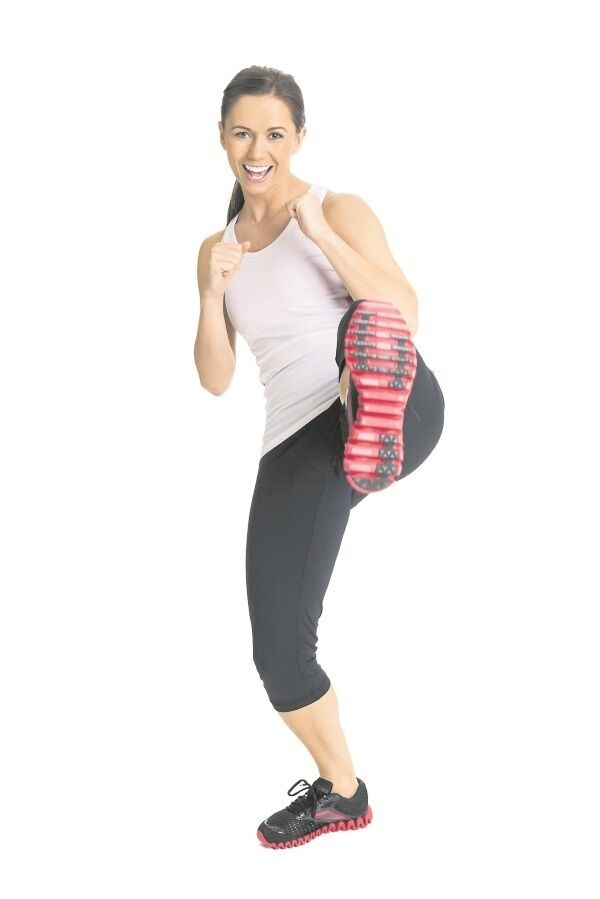
Eight small steps toward a healthier, happier you in 2018
Write down three things you’re grateful for every morning. “This takes you from a place of expectation to appreciation,” says Pat. “You’re focused on what you have, instead of dwelling on what you don’t have.”
“I want to remove the guilt and shame we feel about food,” Pat says.
“Food isn’t good or bad, and you aren’t good or bad because of something you’ve eaten. Change that mindset; enjoy what you eat and pay attention to how food makes you feel.”
Pat steers clients towards meat, fish, nuts, seeds, fruits and vegetables. He says if you make one change to your diet, “add two fistfuls of veggies to your plate every day.”
“I want Irish people consuming more good fats,” says Pat, who cautions that crash diets which eliminate fats and carbohydrates can slow our metabolisms.
Fats have been demonised in the past and that’s made us fearful of them, but increasing our intake of nuts, seeds, avocados, oily fish - anything with omegas 3, 6 and 9 — is
“essential for hormonal, digestive and brain health,” says Pat, who supplements his intake with omega-rich Udo’s oil on salads and in smoothies.
To prepare meals without having to weigh or measure foods, Pat says, “Pick a protein the size of your palm; add 2-3 tablespoons of healthy fats from oils, nuts or avocado; then fill your plate with veggies.”
“Find a form of training you enjoy and for your personal development commit to getting a little better every time you do it,” says Pat. “The best way to do this is to have a goal, be it
running a 5K, reaching a certain weight, or getting the next belt in a martial art.”
Simple but effective, start tracking your steps, aiming for 10,000 steps per day on top of your regular training.
Keep setting new goals. “When I ask clients who’ve lost weight what their next goal is, often they say, ‘I just want to keep it off now’,” says Pat. “But focusing on the weight you lost is like looking in the rear view mirror. Keep setting new goals and keep moving forward.”

Move to lose
We’ve all got busy lives, so when it comes to fitness, wellness coach Pat Divilly believes small, attainable, but consistent changes can gradually transform your body and your health.
“Just three workouts a week in 2018 will add up to over 150 training sessions throughout the year,” he says. “Imagine the impact that will have.”
If you’re looking to drop unwanted fat and increase your fitness, Pat recommends High Intensity Interval Training (HIIT).
Focusing on compound movements that work the body as a unit rather than isolating individual muscles, these five HIIT exercises are ideal for beginners looking to take their first steps towards improved fitness for 2018.
Pick an interval time.
For beginners Pat recommends five sets of 30 seconds work/30 seconds rest for each of the four exercises.
So, pick your first exercise, perform as many repetitions as you can for 30 seconds, then take a 30 second break.
Repeat 5 times, then move on to your second exercise.
As you get fitter, increase your interval to 40 seconds work/20 seconds rest; then 45 seconds work/ 15 seconds rest, giving yourself longer breaks.
Kneeling Push-Ups

Chest, arms, shoulders, core
Start with arms outside shoulder width and hands directly under your shoulders.
Resting your weight on your hands and your knees with a straight line from hip to shoulder.
Lower yourself, bending at the elbow and bringing your chest toward the floor before pushing back to the start position.
This is a great movement to get you stronger in the push-up position as you work toward full push-ups. Squeeze your tummy and glutes throughout to engage your core.
Push-Ups
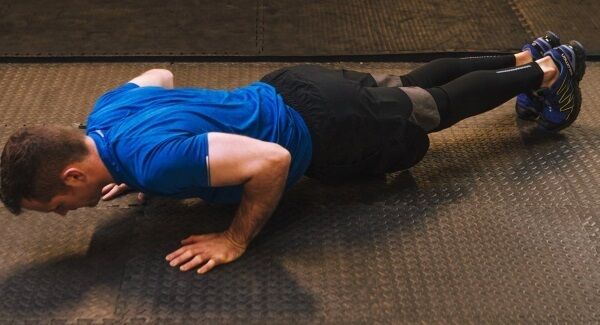
Chest, arms, shoulders, core
Start with arms outside shoulder width and hands directly under your shoulders.
Resting your weight on your hands and your toes with a straight line from heel to hip to shoulder.
Lower yourself, bending at the elbow and bringing your chest toward the floor before pushing back to the start position.
Ensure you are bracing your glutes and tummy throughout the movement to engage the core and protect your lower back. This is a great progression from the kneeling push up.
Step-Up

Glutes and legs
Start standing in front of a step that is about mid-shin height.
Step your left leg onto the step and drive up to standing on both legs on the step. Lower one leg at a time in a controlled manner.
Focus on controlling the lowering part of the movement. It’s easy to just drop your leg from the step to the ground, so instead focus on stepping down in a controlled manner that engages the legs.
Squats
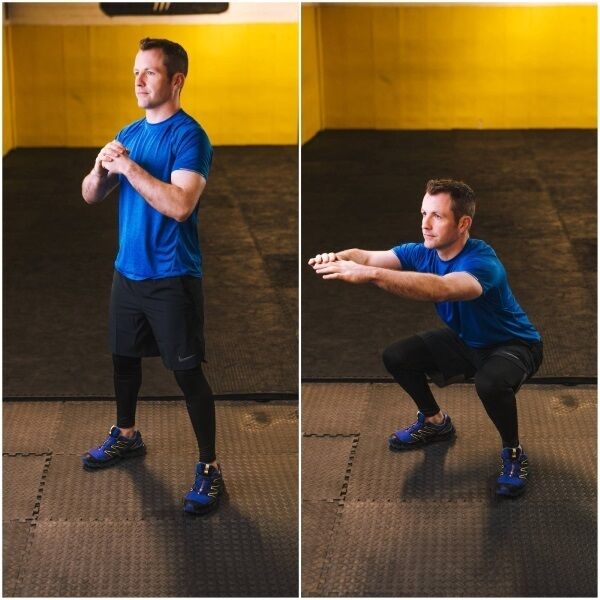
Legs and glutes
Start with feet around shoulder width apart.
Sit until your hips are as low as your knees, keeping your chest up and looking forward.
Push back up using your legs and return to the start position. Remember to keep your heels on the floor throughout.
Keep your posture straight and your chest proud, as if you’re trying to let someone read something on your chest. Beginners can sit back on to a chair if needs be.
Hip Bridge
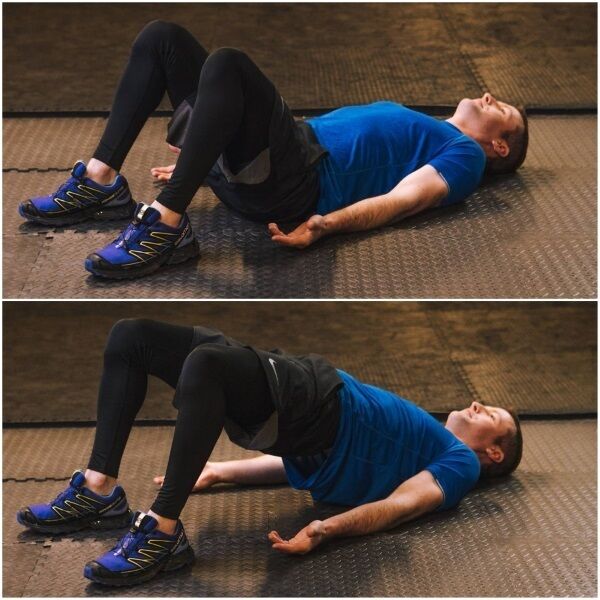
Glutes and hamstrings
Begin by lying on your back with your knees bent, feet on the floor, and palms at your side facing up toward the ceiling.
Push your heels into the floor and push your hips toward the ceiling. Hold for 2-3 seconds before lowering in a controlled manner.
To get the most out of the exercise focus on lowering in a controlled format. It is easy just to drop to the floor but focus on keeping tension on the muscle and lowering at a count of three.

Frame of Mind
You don’t embark on a journey without a destination, and weight loss journeys are no exception. Having a goal for your health won’t require extra energy, but it will give
you focus.
Stop thinking about food or actions in emotive terms like good or bad; right or wrong. Instead, simply ask yourself at the end of each day, “Did today’s actions move me closer my goal?”
Don’t wait for the perfect time or plan to get healthy; start now. Keep it simple, always asking yourself, ‘what’s my next step?’ Complexity overwhelms, but simplicity leads to action.
Fast track your success by seeking out role models. If you want to run a marathon, find people who’ve done it; learn from them and use their advice — don’t try to reinvent
the wheel.
It’s easy to renege on our goals if we only commit to them privately. Publicly stating them keeps us accountable, makes things happen, and strengthens our resolve to achieve them.
Successful people set big goals, but they’re realistic about the challenges they face in achieving them. Identify 5-10 potential obstacles to your goal and put ‘prescriptions’ in place to combat them.
Don’t get disillusioned by comparing yourself to others. Commit to taking small steps every day, competing only with yourself. If you consistently move forward you’ll do incredible things.
Practicing mindfulness for 10 minutes of silence each day helps us notice the thoughts, words and actions that are moving us forward, and the thoughts and behaviours that
are holding us back.










